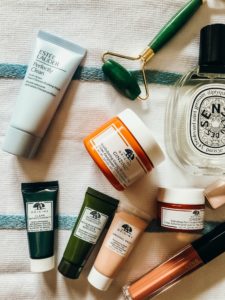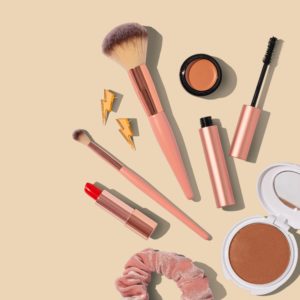In Order to Be Clean, We Might Need to ‘Think Dirty’
Published on Oct. 24 at 4:18 p.m.
by Sydney Palmer.
We all want to use cosmetic products that are good for us, right? Nobody purposefully purchases a product they think will make their skin break out or make their hair brittle. Many people rely on reviews of products by others to decide which ones they want to buy, but how many times do they read the long list of ingredients on the back of the bottle? And if you do read the ingredient list, do you really know what those long, science-y words mean?
In a world with thousands of products claiming to be “clean,” “organic” or “natural,” how can we truly know which products are? After all, the FDA has no guidelines for the term “natural” in cosmetic labeling. Companies use these phrases in their marketing interchangeably to make consumers believe that their products are full of clean ingredients, and unless you understand the complicated ingredient names, you are none the wiser.

It is critical for companies to build long-term relationships with their consumers and the easiest way for them to do so is through advertising. Due to the aforementioned limited FDA regulations on cosmetic labeling, companies use buzzwords in their advertisements. They use illusive, greenwashing phrases to make their products more appealing.
However, buzzwords tend to backfire when the consumers read product ingredients and realize what the company is doing.
Educating yourself on the ingredients and claims of the products you buy has become a lot easier with apps like Think Dirty or Code Check, which are equipped with a barcode scanner to scan the back of your cosmetic products, analyzing the ingredients and telling you what’s really in them. Making informed choices on which cosmetics to buy or understanding lengthy ingredient names in the products you currently use is key to solving your cosmetic struggles.
Think Dirty rates products out of 10. A score of zero to three means the product does not contain any ingredients that have “a documented potential negative health impact”; four to seven means the product’s ingredients have “potential moderate negative long term health effects”; eight to 10 means a product’s ingredients have “potential serious negative long term health effects.”

Let’s use Think Dirty to break down the ingredients of Olaplex No.4 Bond Maintenance Shampoo, a popular shampoo that claims to be a cruelty-free, non-toxic formula that promotes wellness in your hair without threatening the environment. Think Dirty rates Olaplex Shampoo an eight. With 74 ingredients, 60 of them are determined to be “clean.” However, there are seven ingredients that are “half and half” and one that is considered “dirty.”
The Think Dirty app clearly summarizes the ingredients list for the product and gives you the opportunity to click on each ingredient to understand what it means. For example, in Olaplex Shampoo, there’s an ingredient called alpha-isomethyl ionone. Personally, I have no idea what that is. Thanks to Think Dirty, I now understand that it is a fragrance that causes respiratory and skin irritation and is a possible carcinogen, or cancer-causing substance. Now I can avoid this product and choose something without that ingredient.
These companies rely on the fact that most consumers don’t check cosmetic product ingredients. It is their duty to provide quality products and not take advantage of the trust consumers have in them. I think it’s high time we, as their priority publics, start calling them out.




